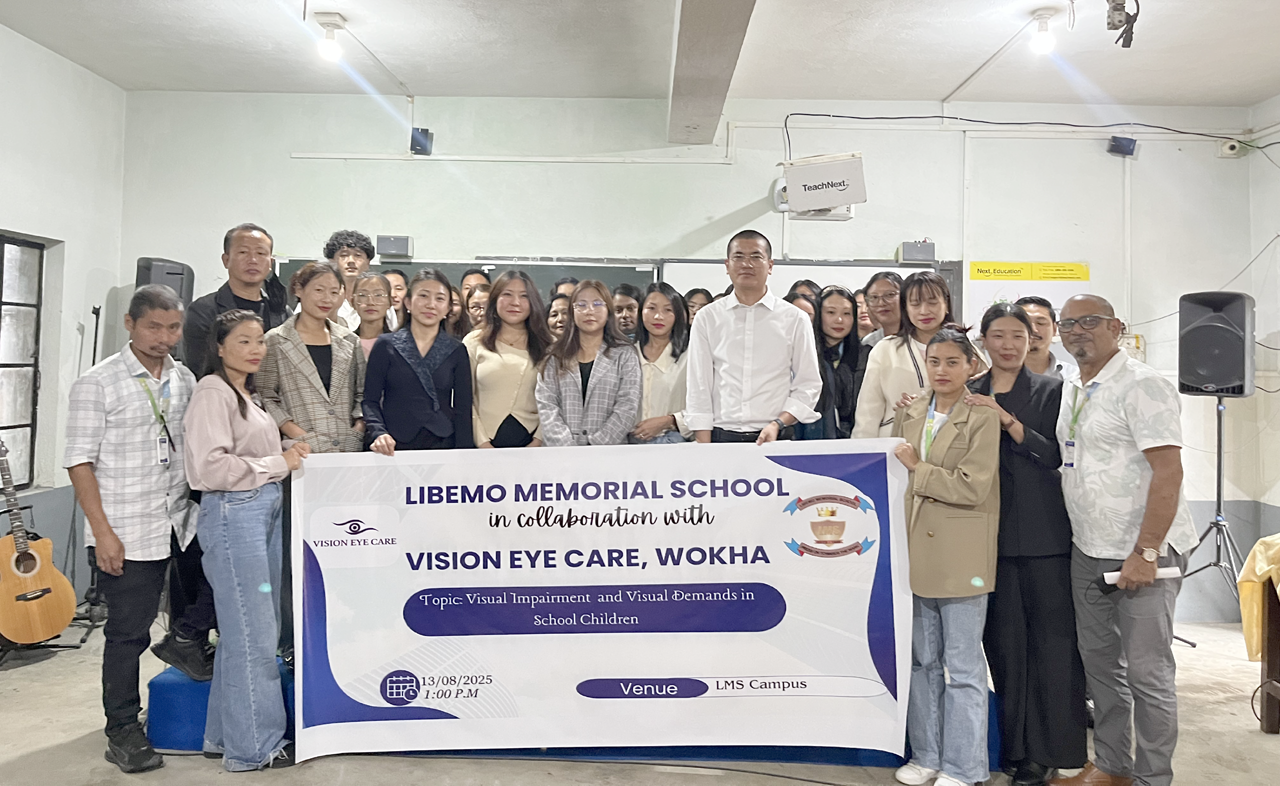Libemo Memorial School, Wokha, in collaboration with Vision Eye Care, organised an awareness programme on Visual Impairment and Visual Demands in School Children at the school campus on Wednesday.
Dr Chuchong Noklang, EAC (Probation) and Imtiyenla Chang, EAC (Probation) attended as special guests, while Y Porenthung Odyuo, Consultant Optometrist, Vision Eye Care, served as the resource person.
Addressing the gathering, Dr Noklang commended the organisers for initiating the programme, describing it as an important step towards promoting healthy vision and a conducive learning environment for children. She stressed that vision and hearing are vital senses in cognitive and personality development, aiding concentration, participation in activities, and the improvement of social and emotional skills.
While hearing impairment among children is relatively rare, she observed that visual impairment is becoming increasingly common, particularly with the rise in screen time due to digital learning, social communication, and entertainment, a trend accelerated by the COVID-19 pandemic.
She cautioned that prolonged screen exposure without regulation could lead to long-term complications and emphasised the importance of early health checks, preventive measures, and a healthy lifestyle.
Imtiyenla Chang, in her address, highlighted the impact of lifestyle changes brought about by technological advancement on the mental and physical health of students. She underscored the importance of protecting eyesight as a key aspect of overall health and urged that awareness efforts be extended beyond schools to families, friends, and rural communities. She expressed appreciation to Vision Eye Care for organising the programme and encouraged continued outreach in both urban and rural areas.
Presenting on the topic, Odyuo drew attention to the global rise in myopia over the past three decades, noting that about 40 percent of children aged 6 to 19 are affected, with Asia recording nearly double that rate.
Download Nagaland Tribune app on Google Play

He cautioned that by 2050, almost half of the world’s population could be myopic, with East and Southeast Asia already reporting prevalence rates of 80–90 percent among school-leavers. Citing screenings in India, he said myopia is more common among older children, females, private school students, and those in urban areas, with prevalence linked to literacy levels.
Explaining refractive errors such as myopia, hyperopia, astigmatism, and presbyopia, Odyuo spoke on symptoms including blurred vision, headaches, halos, eye strain, and difficulty focusing. He noted that high myopia increases the risk of glaucoma, cataracts, retinal detachment, and myopic degeneration, with causes including reduced outdoor activity, prolonged near-work, and parental history of myopia.
He also touched on astigmatism, binocular vision disorders such as amblyopia, and colour vision deficiency, warning that daily screen time of four to six hours is contributing to earlier onset and faster progression of myopia. He cited Rishi Valley School in Andhra Pradesh as an example of good practice in limiting gadget use and promoting outdoor learning.
Emphasising preventive steps such as regular screenings, increased outdoor time, the 20-20-20 rule, and healthy visual habits, Odyuo said teachers can help identify early signs and ensure students with high refractive errors sit in the front rows with proper lighting. He also stressed the role of classroom conditions lighting, ventilation, air quality, temperature, and noise in vision and learning, and recommended integrating task demand assessments into school screening protocols.

